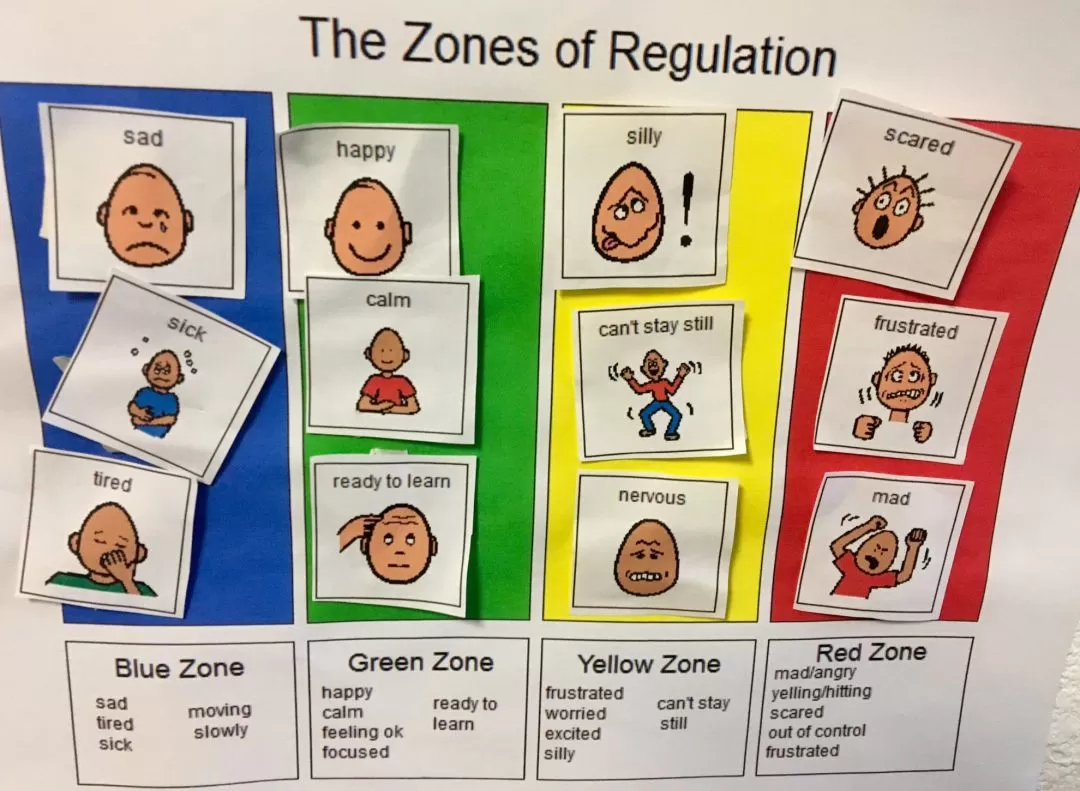Late autumn brings with it a tremendous amount of excitement for children. There are Halloween costumes to choose, turkeys and pies to make and snow to wish for. The winter holidays and a new year lie just ahead. There is a lot of joy to be found in Bixby classrooms at this time of year. It is a wonderful time to be a teacher. That said, all the anticipation and enthusiasm can bring an energy to the surface that is difficult for kids to manage in school. This provides teachers with the perfect opportunity to work with students on labeling, understanding and managing their emotions.
There are many excellent approaches to teaching children explicitly how to take ownership of their feelings and reactions. In my classes, I’ve begun some work based on The Zones of Regulation that addresses the direct effect one’s emotional state has on the ability to be truly present.

The Yellow Zone is also used to describe a heightened state of alertness and elevated emotions; however, one has some control when they are in the Yellow Zone. A person may be experiencing frustration, anxiety, excitement, silliness, the wiggles, or nervousness when in the Yellow Zone.
The Green Zone is used to describe a calm state of alertness. A person may be described as happy, focused, content, or ready to learn when in the Green Zone. This is the zone where optimal learning occurs.
The Blue Zone is used to describe low states of alertness and down feelings, such as when one feels sad, tired, sick, or bored.
The Zones lend themselves nicely to quick and silent visual reminders for students. In class, we sometimes compare the Zones to traffic signs. Green means “good to go”. Yellow means “caution”. Red, of course, means “stop”! I stress to students that all zones are okay. And that I expect that each one of us will find ourselves in every zone at some point during our year together! The key is to manage oneself based on the environment and people around us. The core focus of this work is to positively support the acquisition of self-regulation skills as Bixby students continue learn to work together as a group.



